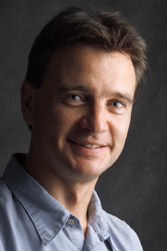材料成形与模具技术国家重点实验室
“追击材料前沿,展示名师风采”
第167期“杰出学者讲坛”学术报告
讲座题目:Cathodic arc plasmas: An introduction from historic roots to modern applications
时间及地点:2016年5月18日 9:00 先进制造大楼西楼A308
讲座题目:Getting Published: From Understanding to Mastering the Publication Process in a Peer-Reviewed Journal
时间及地点:2016年5月18日 10:20 先进制造大楼西楼A308
 Dr. André Anders
Dr. André Anders
Lawrence Berkeley National Laboratory,
University of California, Berkeley, USA
Introduction:
André Anders is a Senior Scientist and the Leader of the Plasma Applications Group at Lawrence Berkeley National Laboratory (LBNL), Berkeley, California. Since July 2014, he is the Editor-in-Chief for Journal of Applied Physics, published by AIP Publishing.
Andre studied physics at the University Wroclaw, Poland, Humboldt University Berlin, then East-Germany, and at the Lomonosov Moscow State University, Moscow, Russia, then Soviet Union. He holds an M.S. degree ('84) and Ph.D. degree ('87) in physics from Humboldt University, Berlin. He was a Staff Scientist at the Academy of Sciences in East Berlin (1987-1991), witnessing the fall of the Berlin Wall in November 1989. In 1992, using new opportunities, he moved to Berkeley, California, to join LBNL where his research involved topics of plasma physics and material science, including coatings and thin film synthesis, high power impulse magnetron sputtering, cathodic vacuum arc plasma and ion sources, gas plasma sources, ion implantation, and plasma immersion ion implantation, transparent conducting oxides, and electrochromic materials.
Abstract:
(1) Cathodic arc plasmas: An introduction from historic roots to modern applications
Cathodic arcs are discharges producing plasma primarily composed of the material from the cathode. Such arcs are prolific sources of metal plasmas that can be used, for example, to make thin films and coatings of metals, metal compounds, or diamond-like carbon films. In this introduction I will illustrate a research field with 250 years (!) of history, leading to industrial application of hard and superhard coatings, and vacuum interrupters for managing the power grip at the level of 10s of kV and 100 of kA, to unwanted instabilities at the walls of Tokamak fusion reactors, to name a few. This introduction has therefore far reaching facets, from little known history to material science to electrical engineering.
(2) Getting Published: From Understanding to Mastering the Publication Process in a Peer-Reviewed Journal
This short tutorial covers various aspects of getting published and aims especially at those at the beginning their scientific career. Getting published in a peer-reviewed journal is a central objective for practically every scientist. It is important for personal satisfaction as well as a central metric for moving on in a career. To get published, the report to be delivered must represent a good, hopefully exciting “story”. The “story” states the problem to be studied, the approach, method, findings, interpretations, and conclusions. Editors look increasingly not only at the quality of storytelling but the degree of advancement in the field, the potential impact, and excitement it may generate among peers and the community at large.
In order to be published, a manuscript has to pass two barriers: the editorial barrier and the reviewer barrier. To make that happen, much care has to be invested in crafting the manuscript, assuming that the research part is done well. Crafting the manuscript includes many facets such as appropriate use of English, good design of graphics, etc. I will elaborate on them, revealing the “secrets” that will convince editors that your work is worth to be reviewed and published.
Besides giving practical advice, I will also touch upon formal questions such as publication ethics, plagiarism, and copyright. There will be ample time for your questions.
');
for(var i=0;i
"+l.split(',')[0]+"");
}
document.write("");
}
